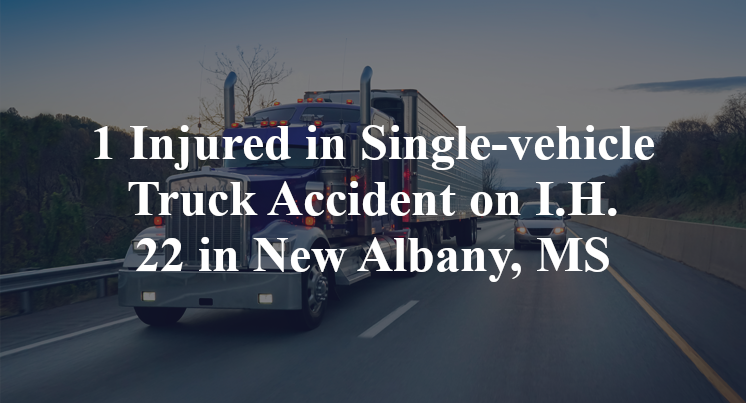1 Injured in Single-vehicle Truck Accident on I.H. 22 in New Albany, MS
New Albany, MS — April 1, 2025, one person was injured following a single-vehicle truck accident sometime in the morning along Interstate Highway 22.
According to authorities, the accident took place on I.H. 22 in New Albany. Details surrounding the accident remain scarce.

Officials indicate that, for as yet unknown reasons, an 18-wheeler failed to safely maintain its lane of travel. It reportedly veered off of the roadway where it collided with a power pole. One person suffered injuries of unknown severity, according to reports. Additional information pertaining to this incident—including the identity of the victim—is not available at this point in time. The investigation is currently ongoing.
Commentary by Attorney Michael Grossman
When a commercial truck leaves its lane and crashes off the roadway—especially without any other vehicles involved—it raises immediate questions about what was going on inside that cab before the crash happened. In my experience, single-vehicle accidents involving 18-wheelers don’t just happen out of nowhere. They’re often the result of something that went wrong well before the truck ever left the road.
The first place any meaningful investigation should start is with the driver. Was the driver distracted by a phone, GPS, or in-cab device? Were they dealing with fatigue after too many hours behind the wheel? Or was there a medical emergency that impaired their ability to stay in their lane? Those aren’t just hypotheticals—they’re common causes in cases I’ve handled, and each one comes with its own legal implications.
But it’s not enough to stop with the driver. If this was a commercial operation—and most 18-wheelers are—the company that put the truck on the road also has a role to examine. Did they properly train the driver to handle emergency situations? Were they monitoring hours of service to prevent fatigue? Did the truck undergo recent maintenance, and was it in proper working condition? Any one of those factors could have contributed to the crash, and I’ve seen many cases where a company’s failure to uphold basic responsibilities was the root cause.
Also worth asking is whether the vehicle’s onboard systems—like the engine control module or in-cab cameras—were working and preserved after the crash. Those tools can tell investigators exactly how fast the truck was going, whether the brakes were applied, and what actions the driver took in the moments leading up to the collision. Without that kind of evidence, it becomes difficult to determine whether this was a case of driver error, mechanical failure, or something else entirely.
From where I sit, a crash like this one shouldn’t be viewed as a mystery or a fluke. It's a signal that something went wrong—and that something needs to be understood in full. Only a thorough investigation will uncover what led to the truck leaving the roadway, and only then can the right parties be held accountable and those affected by the wreck receive the clarity and closure they deserve.

“These are essential reads for anyone dealing with the aftermath of a truck wreck”– Attorney Cory Carlson